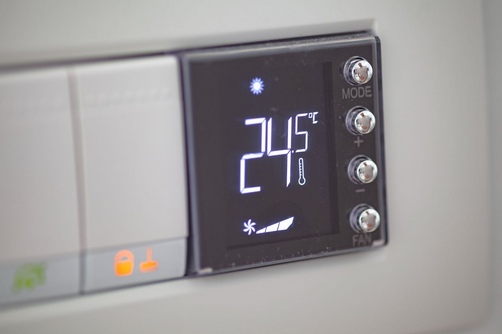From Start to Finish: How Long for New Boiler Fitting?
From Start to Finish: How Long for New Boiler Fitting?
February 24, 2024
A properly executed boiler installation is an investment in comfort and efficiency – but how long will it take?
The time frame for fitting a new boiler varies greatly depending on factors like type adjustments and location changes. Typically, swapping out an old model for a standard replacement takes mere hours—about 4-6 to be

precise – ensuring rapid restoration of warmth to your home. However, it can take up to 4 days for more complex installations.
This blog unfolds all you need to know about timelines for different scenarios, from simple replacements to full-scale central heating overhauls, designed to guide you step by step through your journey towards enhanced home heat management.
Key Takeaways
- Fitting a new boiler can take anywhere from 4 hours for a simple swap to 3 – 4 days when changing the type and position.
- Moving your boiler or switching fuel types usually requires additional installation time due to extra pipework and safety checks.
- Extra steps, like power flushing and installing smart thermostats, may extend the overall installation time but improve efficiency and control.
- A straight boiler swap could be done in one day by a skilled plumber provided there are no complications.
- Energy-efficient boilers can save money on heating costs over time while also reducing carbon emissions.
Factors Affecting Boiler Installation Time
The type of boiler, its position, and any changes in fuel types can impact the length of time it takes to install a new boiler. These factors will determine the complexity of the installation process.
Type of Boiler
Combi boilers, system boilers, and conventional boilers each need a different setup. Combi boilers are popular because they heat water straight from the mains without needing a cylinder.
They save space and are often quicker to install than traditional models. System and conventional boilers work with hot water tanks or cylinders, which can add time to the job.
Different setups may require new pipes and electrics. An engineer might need more time if your home needs extra work for the new boiler type you choose. Next, let’s consider how the position of your boiler affects installation time.
Position of the Boiler
Besides the boiler type, where you put it is key. If you choose to move your boiler, extra work comes into play. You’ll need new pipes for water and gas. Electric power and thermostat cables also have to be set up right for everything to work.
Moving a boiler isn’t just about shifting the unit itself. Walls might need holes for the flue and space must be safe from carbon monoxide leaks. The room also needs enough airflow to keep the boiler running well.
This means that if your central heating system’s design changes, so does the installation time.
Changing both type and position often takes 3-4 days to complete. All tasks such as fitting pipes, adjusting wires, and ensuring safety from emissions like carbon monoxide poisoning are done with care by a Gas Safe registered engineer.
They make sure your radiators heat up without any issues after moving your boiler.
Changing Fuel Types
Moving from one type of fuel to another adds complexity to the installation process. Switching fuel types often means new pipework and electrical setups are necessary, taking extra time.
If you’re moving away from an oil boiler to a gas system, or venturing into renewable energy like heat pumps, expect the work to take 2-3 days. The engineers must handle everything with care to ensure safety and efficiency.
Fitting a system that uses different fuel might involve major changes like adding a flue outside for gas emissions or connecting new power lines for electric boilers. It is crucial that only qualified professionals such as Gas Safe engineers undertake this task.
They will make sure your new heating controls meet current standards and function correctly with your chosen energy source.
Average Time to Install Different Types of Boilers
The time it takes to install different types of boilers can vary significantly. Factors such as the type of boiler, changing positions, and new installations all impact the average installation time.
Straight Boiler Swap
A straight boiler swap means replacing your old boiler with a new one in the same place. If everything is set up just right, this job usually takes between 4-6 hours. Your plumber will remove the old unit and fit the new one using existing pipes and connections.

If you pick a like-for-like replacement, there’s no need for big changes to your home’s plumbing system. This makes swapping boilers quicker and simpler. With well-prepared work, you can expect hot water flowing again on the same day of installation.
Keep in mind that timing may vary depending on factors such as boiler flue position or any additional upgrades required alongside the swap.
Changing Boiler Position
Moving your boiler to a new spot means more work. It takes longer because new pipes and wires are needed. The job usually lasts 1-2 days. Workers fit fresh pipework for water and gas, making sure everything’s safe and tidy.
They also run new cables for the thermostat that controls the heat. A good spot means your boiler works well and saves you cash on heating bills.
Relocating your boiler is not just about moving it; space matters too. The workers check that the new location meets legal rules for safety, like enough airflow and correct flue fitting outside the house.
Careful planning ensures smooth installation without surprises later on.
Installing a New Combi Boiler
Fitting a new combi boiler usually takes between 4 and 6 hours. This work includes hooking up the water pipes, connecting the gas lines, and setting up the controls. A professional will need to test everything to make sure it runs well before they finish.
If you choose a Worcester Bosch combi boiler or any other brand, ensure your engineer is registered with CORGI or a similar body. They should follow all safety rules while installing your combination boiler.
If you pair this system upgrade with a smart thermostat, controlling your heating becomes even more efficient.
Changing Boiler Type and Position
After choosing the ideal combi boiler, you might consider a different type of system. Opting for a new boiler type and moving its position is a more complex job. It often involves extensive work such as rerouting pipework and possibly adjusting chimney or flue locations.
Because of these changes, expect the installation to take 3-4 days.This process could include switching from an immersion heater to a more efficient Worcester Bosch boiler that suits your home’s needs. The engineers will need time to ensure everything is set up correctly and safely, including any necessary updates to comply with current terms and conditions set by the financial conduct authority regarding energy usage and safety.
Changing Fuel Type
Changing the fuel type of a boiler requires extra plumbing and electrical work, often taking 2-3 days. This is due to the need to adapt the system for a different type of fuel, involving rerouting pipes and making adjustments to ensure safe and efficient operation.
As such, it’s essential to consider this time frame when planning for a boiler upgrade or replacement involving a change in fuel type, allowing for proper installation and testing.
Due to additional complexities involved in adapting the system for new fuels, such as gas to oil or vice versa, specialists are tasked with carefully handling each step of the process while ensuring compliance with safety regulations and standards.
Additional Aspects of Boiler Installation
In addition to fitting a new boiler, there are other aspects of installation to consider such as power flushing and installing smart thermostats. These additional steps can contribute to the overall time it takes to complete the installation process.
Power Flushing
Power flushing is a vital process to clear any debris or build-ups in your heating system, ensuring it runs efficiently. If you notice noisy radiators or slow heating, power flushing may be necessary.
This procedure generally takes around 5 to 6 hours and should be carried out by a Gas Safe Engineer before fitting a new boiler. It helps prepare the system for the installation of a new boiler and ensures its optimal performance.
Ensure that a qualified professional inspects your system and performs power flushing to maintain the efficiency of your new boiler installation.
Installing Smart Thermostats
Smart thermostats can be easily installed in about an hour. These devices allow you to control your heating using a mobile phone, providing convenience and energy efficiency. Whether it’s adjusting the temperature from work or ensuring the heating is off while away, smart thermostats offer flexibility and potential cost savings.

When installing a smart thermostat, consider finding a qualified professional with expertise in this area to ensure proper installation for optimal performance.
Energy-efficient boilers, such as modern combi or gas system boilers, help save money by reducing heating costs and producing fewer carbon emissions. Upgrading from old back boilers to these energy-efficient options can make a substantial difference in long-term savings and environmental impact.
Power flushing is also crucial for maintaining heating system efficiency, ultimately contributing to cost savings over time.
Investing in energy-efficient boilers not only saves money on heating costs but also reduces carbon emissions for a more environmentally friendly home. Upgrading from older boiler systems to modern, efficient ones can bring significant long-term financial benefits while also positively impacting the environment through reduced carbon emissions and efficient energy use.
Is Replacing a Boiler a Messy Job?
Boiler replacement can be a messy job, especially when old systems are removed. Dust and debris may scatter, and there could be some water spillage during the decommissioning process.
Protecting the surrounding area with dust sheets and ensuring proper drainage for any water is essential to minimise mess.
Considering factors like the location of the boiler, adequate protection for floors and belongings, as well as scheduling cleaning post-installation can significantly reduce the potential mess.
Now You Know…
Fitting a new boiler involves various factors impacting installation time. Implementing practical steps such as consulting a Gas-Safe engineer and considering the type of boiler can significantly streamline the process.
Understanding the importance of proper planning and the potential impact on your heating system is crucial for success. Seek guidance from an Ideal accredited installer to obtain accurate quotes and further resources.
FAQs
1. Will it take longer to fit my oil boiler compared to other types?
Yes, fitting an oil boiler might take more time because it often requires a more complex installation process than gas boilers.
2. Can I use my hot water while my new Worcester Bosch boiler is being fitted?
During the installation, which includes tasks like chemical cleansing of your system, you won’t be able to use your heating or hot water until the fitting is complete.
3. Is there any waiting period after getting my contract with a credit broker for a new water heater?
After signing the contract with a credit broker for lending support in buying your water heater or immersion heater, there may be a cooling-off period before the work starts.
4. Does installing wind power systems affect how quickly I can get my new washer running on hot water from the tap?
Your washing machine should run efficiently soon after we’ve connected it to your newly fitted hot water cylinder unless additional adjustments are needed for integrating wind power solutions.






